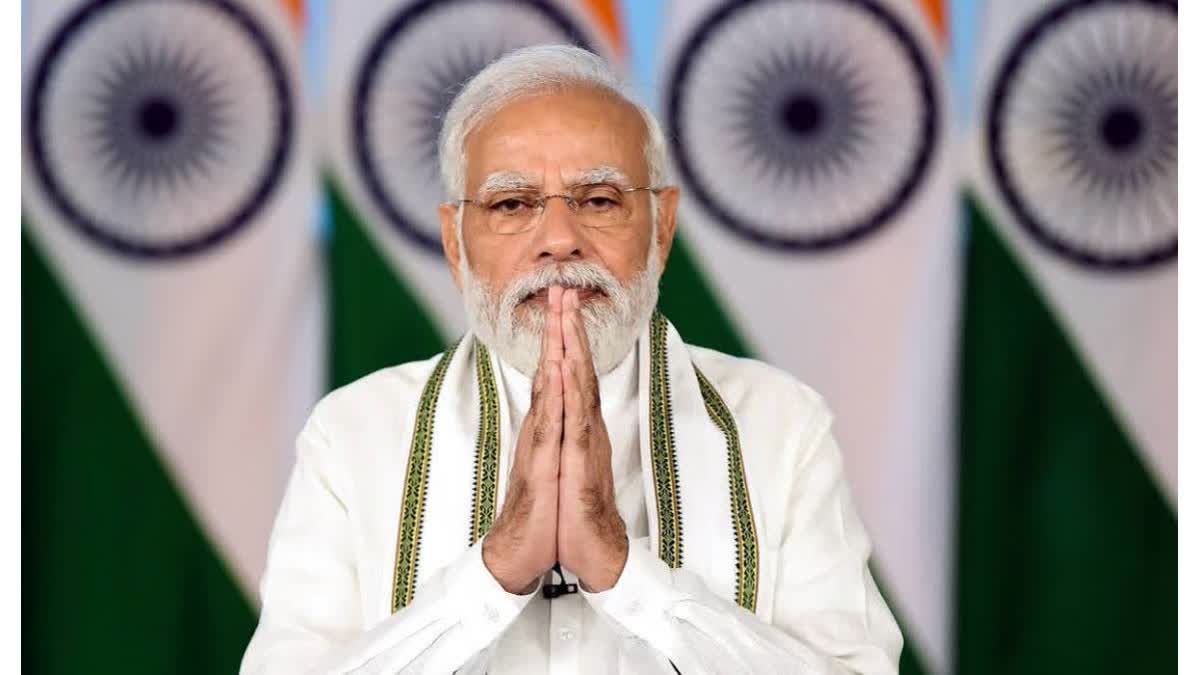New Delhi: Prime Minister Narendra Modi's visit to Laos will see a great amalgamation of culture that has been one of the key elements of the bilateral ties between the two countries. A special performance on Phralak Phrarram or Lao Ramayana is a part of the PM's schedule.
Addressing the special briefing here in New Delhi, Secretary (East) MEA, Jaideep Majumdar said, "Prime Minister Modi will be travelling to Vientiane in Lao PDR for the 21st ASEAN-India Summit and the 19th East Asia Summit at the invitation of Prime Minister of Lao PDR, Sonexay Siphandone. The visit will be over by October 11. We attach great significance to all ASEAN-related mechanisms".
"This will be the Prime Minister's tenth attendance at the ASEAN-India Summit...The significance of this particular summit will be that it is the tenth anniversary of the Prime Minister's Act East policy...We will be extending our support for the chair's theme--Connectivity and Resilience", he added.
"We expect that before the end of the year, we will have direct flight connectivity with two more ASEAN countries...Moving on to the East Asia Summit, which encompasses 10 ASEAN countries and eight partners-- Australia, China, India, Japan, Republic of Korea, New Zealand, Russia and the United States. Timor-Leste will also be a partner as an observer", he further said.
What is Pha Lak Pha Lam?
Pha Lak Pha Lam (Phra Lakshman Phra Ram) is the Lao adaptation of the Ramayana (or Ramakien, as it is popularly known in Southeast Asia). The Ramayana, popular throughout South and Southeast Asia, was first brought to the ancient Lao kingdom of Lane Xang centuries ago by Buddhist missions. The Lao version has taken on a distinctive style. Phalak Phalam is performed by dancers, musicians and artists on special occasions, especially as part of the annual Pi Mai (Lao New Year) celebrations. Some also attribute its origins to the Jataka tale. The main characters are Phralak (Lakshman), Phralam (Ram), Nang Sida (Sita) Thotsakhan or Hapkhanasouane (Ravana), Hanuman, Sampati and Jatayu. The most accomplished traditional performance takes place at the Royal Ballet Theatre (Phalak Phalam Theatre) in Luang Prabang. The troupe of the Royal Ballet Theatre of Luang Prabang participated in ICCR’s Ramayana Mela in January 2024 and performed at Ayodhya and Lucknow. Their performances were well-received in India.
India-Laos- the historical Cultural connect
The historic relationship between India and Laos is a compelling chapter in the history of Southeast Asia's global relations. Laos has a shared cultural bond with India over centuries including in religion, language, art and architecture. Legends trace this connection back to Emperor Asoka in the third century BC. According to folklore, Asoka's emissary, Praya Chanthaburi Pasithisak, along with five monks, brought Lord Buddha’s relics to Laos, enshrining them in the stupa known as Pha That Luang, which is a national monument. The Ourangkharittan chronicle, a significant historical document of Laos, supports this legend by indicating that the relics came from Rajgir in Bihar. This chronicle blends Indian literary traditions with local folk narratives, reflecting the deep-rooted cultural ties. Archaeological excavations in Laos yielded the Vat Luang Kao inscription from the 5th century found in Champasak province. This Sanskrit inscription narrates the installation of a Shivalinga by King Mahendravarman, illustrating the early Indian influence on Lao culture. Additionally, numerous inscriptions in Pallava script have been found in southern Laos, further emphasizing the Indian connection. Inscriptions from the 5th century King Shri Devanika highlight his adherence to Sanskrit literature and rituals. The inscription of Jayavarman I at Wat Phu, which mentions Linga Parvata and other inscriptions from the 11th century reflects the continued synthesis of Indian culture in Lao society, including religious practices and architectural styles. Today, this shared heritage is reflected in the ongoing cultural and development partnership cooperation. India supports Laos through initiatives such as heritage site restoration and training, capacity building and skilling cooperation, ensuring that the ancient ties between the two nations remain vibrant.
India-ASEAN ties
India’s ties with Southeast Asian countries have been based on civilisational and cultural linkages which have grown into acquiring all the elements of a contemporary relationship. These countries are pillars of the ‘Act East’ Policy and Indo-Pacific vision. The year 2024 marks a decade of India's Act East Policy and during this decade the engagements have evolved into robust cooperation in trade and investment, defence and security, connectivity including fintech, heritage conservation and capacity building. This year also marks important anniversaries of the establishment of India’s diplomatic relations with several countries in the region - 75th with Indonesia, 75th with the Philippines, 60th with Singapore and 40th with Brunei.
Also Read:
- Modi Launches Development Projects In Poll-Bound Maharashtra, Targets Cong Over Corruption
- New Political Formations Face Rout In Assembly Elections Yet Firm To Oppose The Government
